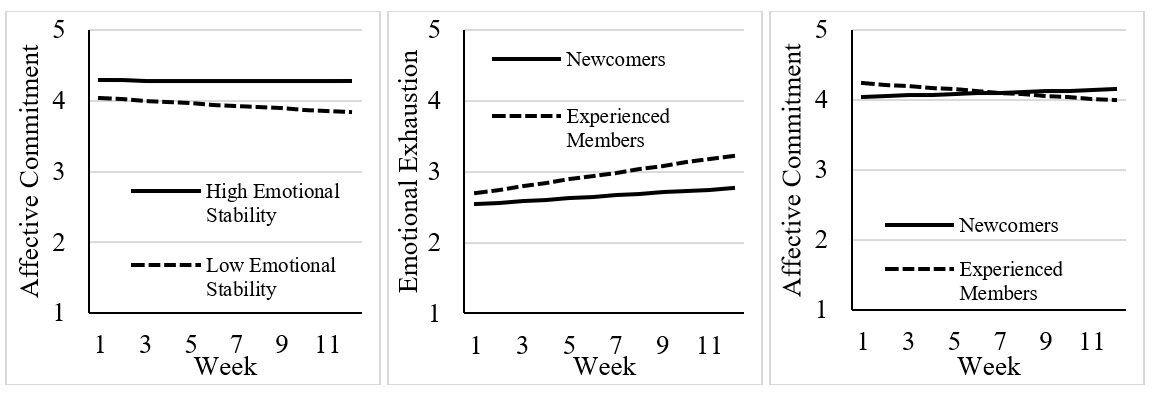Tracking the Process of Resilience
By Patrick J. Flynn, Paul D. Bliese, M. Audrey Korsgaard and Cormac Cannon
Resilience—the ability to adapt to adversity—has been a topic of conversation in both research and popular press for decades. This broad area of focus has led to explorations of resilience to different forms of adversity, including natural disasters, combat exposure, death of a loved one, divorce, and professional failures. In many cases, resilience has been considered in relation to a single event, or stressor. However, people encounter many ongoing stressors in their daily lives, such as the COVID-19 pandemic, balancing work and family obligations, or simply the day-to-day pressures of their jobs. In this study, we aimed to understand resilience to the ongoing stressors associated with being a part of an organization.
While previous studies of individual resilience in organizational contexts predominantly treat resilience as a personality trait, foundational research in psychology considers research as a process that unfolds over time. We combined this process-oriented approach to resilience with the context of an organization. Our approach seeks to understand how individuals' well-being and commitment to the organization fluctuate over time. From these patterns, or trajectories, of well-being and commitment, we are able to infer differences in resilience across individuals. More resilient individuals will demonstrate sustained low levels burnout and sustained high levels of commitment over the course of several months while experiencing the day-to-day stressors associated with being a member of the organization.
We tested our model in a sample of collegiate marching band members over a three-month period during a football season. We asked participants about their personality traits and background information at the beginning of the season and then assessed their feelings of burnout and commitment on a weekly basis over the course of 12 weeks. We found that individuals with greater emotional stability sustained high levels of commitment over time while those with less emotional stability exhibited declining commitment. We also found that organizational newcomers showed more favorable patterns of both burnout and commitment.
Next, we explored how these trajectories of burnout and commitment may influence organizational retention. At the end of the season, we asked non-graduating members of the band if they intended to return for the following season and then also collected information on who actually returned the next school year. We found that more resilient commitment trajectories were related to the intent to remain, and through that intention, the likelihood of retention.
These findings illustrate how a process-oriented approach to resilience can be used in an organizational setting and how resilience unfolds related to ongoing moderate stressors. Managers should recognize the implications that fluctuations in job attitudes (i.e., commitment) may have for retention. This knowledge may allow employers to find opportunities to interrupt the cyclical nature of day-to-day stressors for individual employees in order to avoid non-resilient trajectories. Further, the findings have implications for assessing and understanding employee engagement. The temporal nature of the results and the impact that the trajectories have on retention suggest that infrequent assessments (i.e., annual or biennial employee surveys) may underestimate important differences between employees or could miss change processes entirely.
Article details
Tracking the Process of Resilience: How Emotional Stability and Experience Influence Exhaustion and Commitment Trajectories
Patrick J. Flynn, Paul D. Bliese, M. Audrey Korsgaard, Cormac Cannon
First Published July 13, 2021
Group & Organization Management
About the Authors





